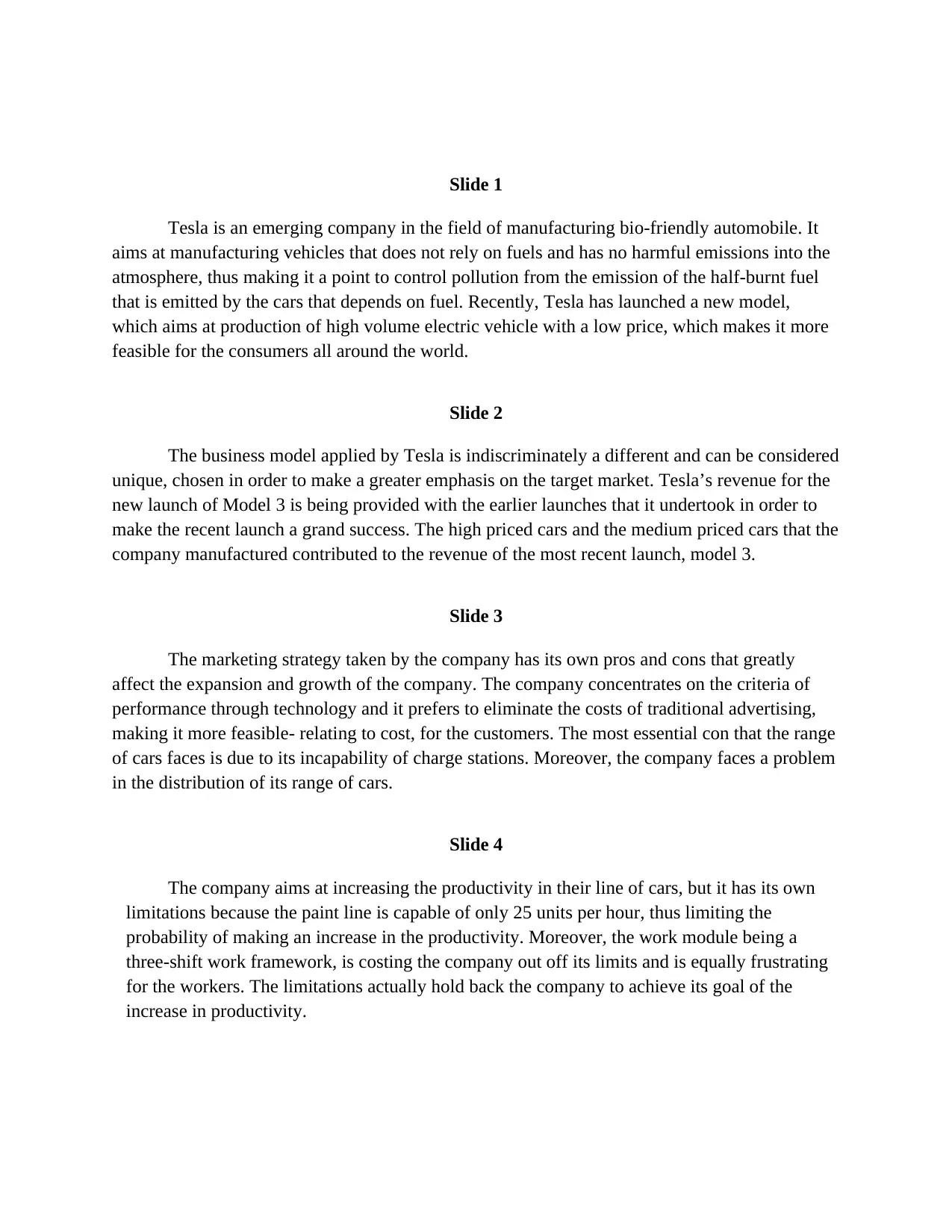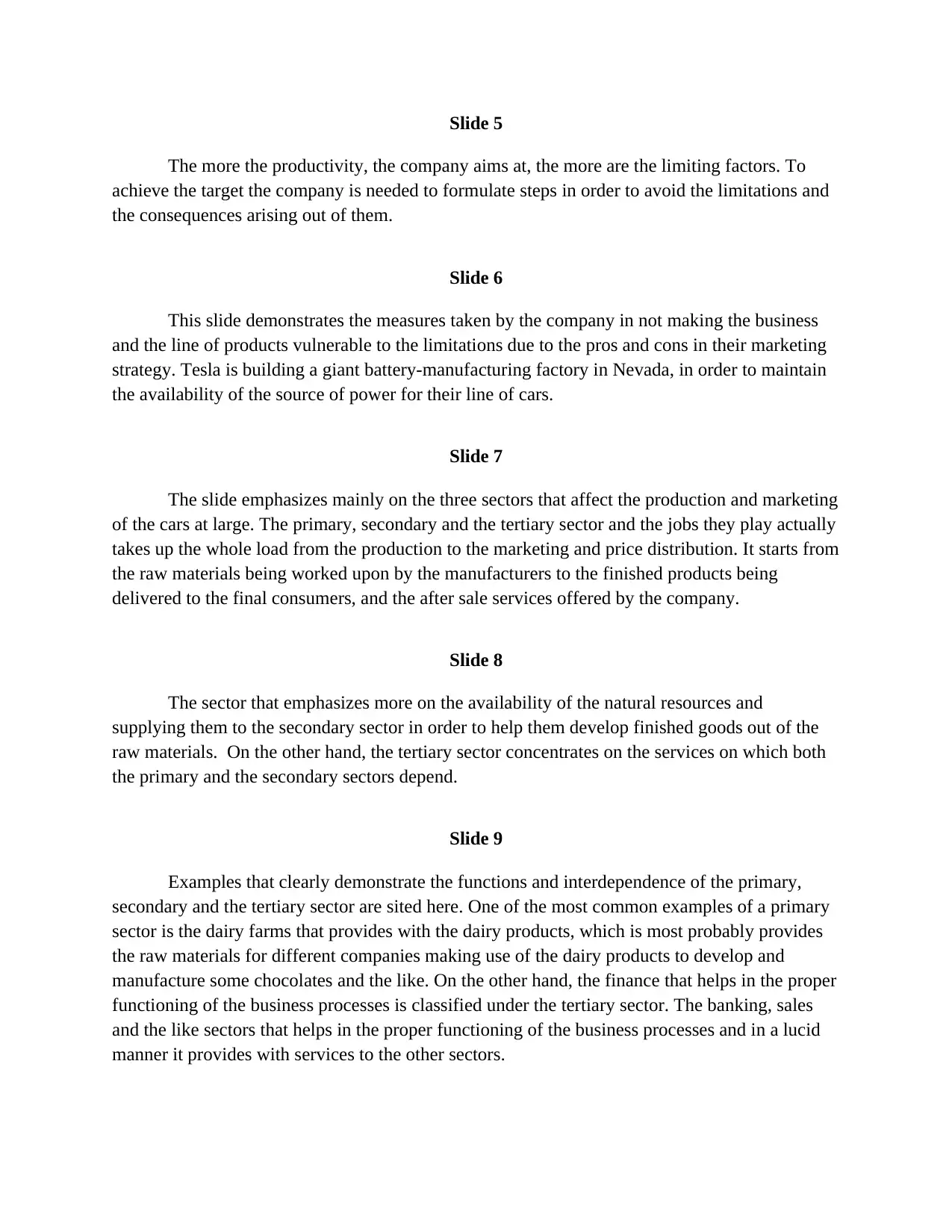A Comprehensive Analysis of Tesla's Business Strategies and Operations
VerifiedAdded on 2020/02/18
|2
|746
|130
Report
AI Summary
This report provides an analysis of Tesla's business model, focusing on its unique approach to the electric vehicle market. It examines Tesla's marketing strategies, highlighting both its strengths, such as a focus on technology and cost-effectiveness, and weaknesses, including limitations in charging infrastructure and distribution. The report delves into Tesla's production challenges, particularly limitations in paint line capacity and the impact of a three-shift work framework on productivity. It also discusses the measures Tesla is taking to mitigate these challenges, such as the construction of a battery-manufacturing factory. Furthermore, the report explores the roles of the primary, secondary, and tertiary sectors in Tesla's operations, illustrating their interdependence with examples like dairy farms and financial services. The analysis aims to provide a comprehensive understanding of Tesla's business strategies and operational challenges, offering insights into its approach to the electric vehicle market.
1 out of 2







![[object Object]](/_next/static/media/star-bottom.7253800d.svg)